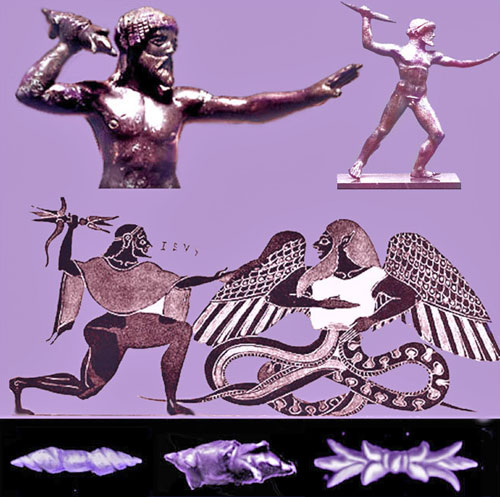|

Oct 04, 2004

A thunderstorm can be a terrifying event. The lightning flash and
thunderclap may indeed awaken a primal fear, and a cursory
acquaintance with mythology may elicit a newfound empathy for the
mythmakers of antiquity. In the presence of a thunderstorm, was it
not natural for our ancestors to envisage lightning-beasts roaring
in the heavens or celestial armies hurling lightning-spears across
the sky?
Unfortunately our common suppositions have prevented investigators
from examining the underlying patterns of "lightning"
symbolism.
Cross-cultural comparison reveals numerous global images of
"lightning" in ancient times, but these are a far cry from the
phenomenon familiar to us today. Ancient descriptions suggest that
the "lightning of the gods" - the cosmic thunderbolt - altered the
order of the heavens and changed planetary history. To describe the
cosmic thunderbolt, ancient chroniclers employed a wide range of
natural and man-made symbols, and the images go well beyond those
that would seem appropriate for lightning.
Terrestrial
lightning was but one of many hieroglyphs used to describe this
celebrated weapon of gods and heroes.
The breadth of images will, in fact, appear quite meaningless until
we find a new vantage point, one permitting us to discern the
archetype, the original form that preceded the symbols and gave them
their mythological context. Analysis will show that the weapon was
electrical: the ancient interpretation as a thunderbolt was highly
appropriate, as were the alternative mythic interpretations, all
rooted in the same human experience.
The montage above shows three Greek images of the god Zeus launching
his weapon, whose most elementary form was that of simple missile
with a corkscrew configuration upon it. But numerous illustrations
of the weapon show it sending forth leaf-like sepals, then
"flowering" into a lotus-form. The petals of the lotus-thunderbolt
are also elaborated as horns or wings, a fact that appears absurd
today, until we discover the underlying structure. The patterns are,
in fact, surprisingly consistent.
One example of the evolving form is seen in the picture of Zeus
confronting the feared monster Typhon. Below this picture we
present, as a starting point, three of the more elementary forms of
the Greek thunderbolt, representing the foundation upon which all of
the more elaborate images were built.
In next TPODs, we'll examine the cosmic thunderbolt in
detail, with an emphasis on cross cultural comparison. Clearly, the
subject was not a bolt of lightning such as we observe in the sky
today. It was a plasmoid, a configuration typically formed at the
"z- pinch" of interacting electrical currents. In intensely
energetic plasma discharges, a plasmoid can evolve violently,
through a series of metamorphoses, or quasi-stable phases, and many
of these forms have now been well documented through several decades
of laboratory research. The literary and artistic images of
Zeus'
thunderbolt capture some of the most prominent phases of
intense
plasma discharge.
|
